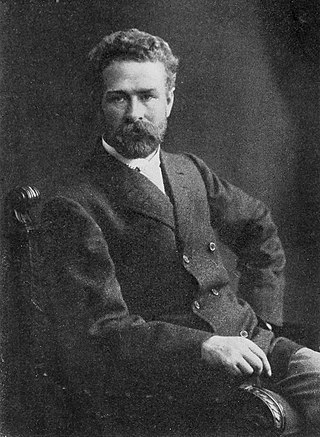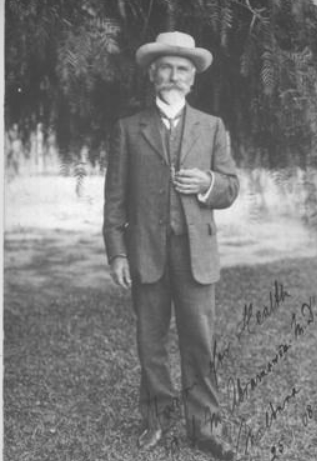
Thomas Richard Allinson was an English physician, dietetic reformer, businessman, journalist and vegetarianism activist. He was a proponent of wholemeal bread consumption. His name is still used today for a bread popular in Europe, Allinson bread.

Eustace Hamilton Miles was an English real tennis player, author and restaurateur. He competed in the 1908 Summer Olympics and was a diet guru who made his name selling health products and health advice to Edwardian Britons.

Douglas Macmillan was an English civil servant, vegetarianism activist and founder of the Macmillan Cancer Support charity, now one of the largest charities in the UK.

Howard Williams was an English activist, historian, and writer. He advocated for humanitarianism and vegetarianism. Williams was noted for authoring The Ethics of Diet, a history of vegetarianism, which was influential on the Victorian vegetarian movement. He was also the inspiration and co-founder of the Humanitarian League and served as Vice-President of the London Vegetarian Society.

The Order of the Golden Age (OGA) was an international animal rights society with a Christian, theosophical and vegetarian emphasis, which existed between 1895 and 1959.

Adolf Just (born 8 August 1859, Lüthorst near Dassel, Kingdom of Hanover; died 20 January 1936, Blankenburg was a German naturopath. He was the founder of the sanatorium Jungborn in Eckertal.

Ernest Bell was an English publisher, writer and activist. He was an advocate for animal rights and welfare, vegetarianism, and humanitarian causes.

Josiah Oldfield was an English lawyer, physician, activist, and writer. He promoted his own variant of fruitarianism, which was virtually indistinguishable from lacto-ovo vegetarianism. Oldfield was a prolific writer of popular books on dietary and health topics. He also served in the Royal Army Medical Corps and received the Territorial Decoration for his service in World War I.

Daniel Hartman Kress was a Canadian physician, anti-smoking activist, Seventh-day Adventist missionary and vegetarian. He advocated a vegan diet on religious grounds but after health issues promoted a lacto-ovo vegetarian diet. He argued that meat eating shortens ones lifespan.
Alexander Haig was a Scottish physician, dietitian and vegetarianism activist. He was best known for pioneering the uric-acid free diet.
Charles Emmanuel Reinhardt (1868–1920) was a British physician, animal welfare activist and anti-vivisectionist.

John Haddon (1845–1924) was a Scottish physician, dietitian and vegetarianism activist.

Cyril Valentine Pink (1894–1965) M.R.C.S., L.R.C.P. was a British obstetrician, naturopath, Theosophist, and vegetarianism activist. Pink was an early medical advocate of natural childbirth. He was the co-founder of Stonefield Maternity Home and was a disciple of Maximilian Bircher-Benner.

Bertrand Peter Allinson was an English physician, naturopath and writer. He was also an anti-vaccination, anti-vivisection and vegetarianism activist.

Major Reginald Francis Edward Austin L.R.C.P., M.R.C.S. was a British physician, naturopath and anti-vaccination activist.

Otto Louis Moritz Abramowski was an Australian surgeon, naturopath, fruitarian and raw foodist.

Robert BellFRFPS was an English physician and medical writer. He specialised in gynaecology and oncology and was vice-president of the International Cancer Research Society. He was also a naturopath and published several books on cancer and other diseases. Bell was an advocate for alternative cancer treatments, including raw foodism, fruitarianism, and vegetarianism. In 1912, he was accused in the British Medical Journal of quackery. He successfully sued them for libel and was awarded £2000 damages.

Archibald Hunter was a Scottish hydrotherapist, naturopath and writer.
George Black was a Scottish physician who operated a vegetarian hotel in Belstone called Dartmoor House.
Robert Howell Perks was an English naturalist, physician and anti-vivisection activist.

















